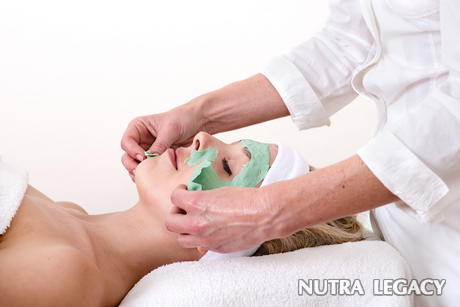Top 7 Interesting Facts about Glycolic Acid Peels

- A glycolic acid peel can be used as an anti aging skin care treatment and for anti wrinkle skin care
- Since glycolic acid peels remove the upper layer of skin, they can also be helpful with treating sun damaged skin and acne scars
- Before getting any chemical peel, it’s important to understand some basic facts about the process, such as sensitive skin care and how high a burn risk you may incur. Glycolic acid peels are not for everyone
One of the most popular treatments for sun damage, superficial fine lines, and acne scars are glycolic acid peels. The glycolic acid causes the removal of the upper layer of skin causing the growth of new skin and reducing those visible problems. Before you head down for your next chemical peel, here are some top facts you might want to know first.
1. Glycolic Acid Peels are for Superficial Skin Problems Only
Although there are different and deeper types of chemical peels available, glycolic acid is only used for the mildest cases. While you may not see all of your undesirable features disappear in a single treatment for this reason, you can repeat the process to keep improving the results. Deeper peels are done with trichloracetic acid (TCA) in most cases.
2. Dermatologists Do Not Recommend Glycolic Acid Facial Peels for Everyone
While superficial chemical peels are fairly common place, they are not recommended for all skin complexions because of potential risk for hypo or hyperpigmentation. To determine who might be at risk, doctors use the Fitzpatrick’s Scale of Sun-Reactive Skin Types with Type I patients always burning and never tanning and Type VI patients being just the opposite. These peels are not recommended for people with skin types at the upper range of this scale.
3. Pre-treating Improves Results
Your doctor may give you some ointments to use on your skin in the days leading up to your peel, including tretinoin (Retin-A), alpha hydroxyl acid creams (often containing glycolic acid), and/or hydroquinone (a bleaching agent used to treat hyperpigmentation). Use these as directed for improved results from your peel.
4. Glycolic Acid Skin Care Hurts Less Than You Might Imagine
The idea of burning away the top layers of your skin with chemicals sounds horrific and painful, but most patients are not overly bothered by pain during the procedure. For about ten minutes, patients feel a very warm or hot sensation on the area where the chemicals have been applied followed by a stinging sensation. That’s nothing compared to the discomfort reported during laser resurfacing or dermabrasion.
5. Chemical Peels Aren’t Just for the Face
A common misconception is that glycolic acid peels are normally only used on the face. That’s not the case. These treatments are ideal for other areas of the body, including the legs, arms, back, neck, chest, and hands.
6. Down Time is Minimal
Glycolic acid peels are known as lunch time peels for a reason. Once the peel is finished you can head back to the office with no problems. Your face may be a little red and swollen but otherwise you’ll be able to go about your business as if nothing happened. Remember to apply a good sunscreen to your face as directed by your physician if you are going to be in the sunlight.
7. Glycolic Acid Peels is an Affordable Choice
While most cosmetic surgery treatments cost thousands of dollars, these superficial chemical peels can be as cheap as $150. At the high end, you shouldn’t expect to pay more than around $600. That’s a bargain.
The information supplied in this article is not to be considered as medical advice and is for educational purposes only.
|
One Response to “Top 7 Interesting Facts about Glycolic Acid Peels” | ||||||||||||||





 7 Jan 2009
7 Jan 2009
I have terrible acne scars and I have been wondering about this method. After reading this article, I'm planning on pursuing more research about it.January 21st, 2009 at 9:37 pm